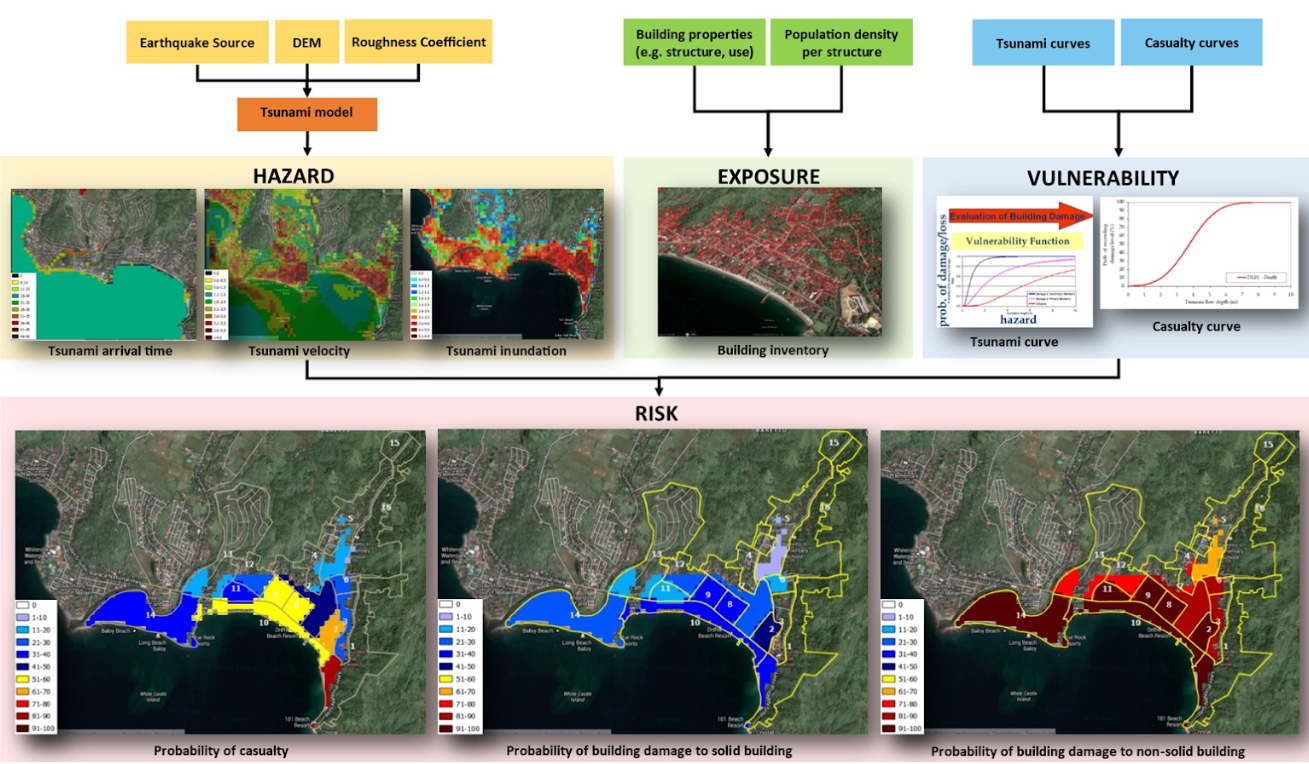Risk assessment is an important process to assess and comprehend tsunami hazard and its effects to communities. In order to optimize end to end early warning systems, tsunami risk information can be utilized to raise public awareness and further develop preparedness planning and response capacity of communities during emergencies.
INSPIRE was developed and implemented in several countries in the region through an ESCAP supported project, realized through a research collaboration between RIMES and Chulalongkorn University, Thailand, and remains as a core tool of RIMES in disaster risk management.
INSPIRE provides a simplified and standardized analytical process and minimum user technical capability for tsunami hazard, vulnerability and risk assessment. The analysis modules are designed to handle multi-dimensional vulnerability data and different levels of data accuracy, allowing users to undertake preliminary tsunami risk assessment using available data, with progressive improvement in assessment results as more detailed and accurate datasets are used.
INSPIRE outputs include tsunami inundation maps, showing maximum inundation depths, maximum flow velocities, and estimated tsunami arrival times, tsunami loss estimates in terms of probability of casualty, probabilities of building collapse or severe damage for different building types, and number of buildings that could be inundated at an inundation depth range for buildings of different construction and occupancy types.
